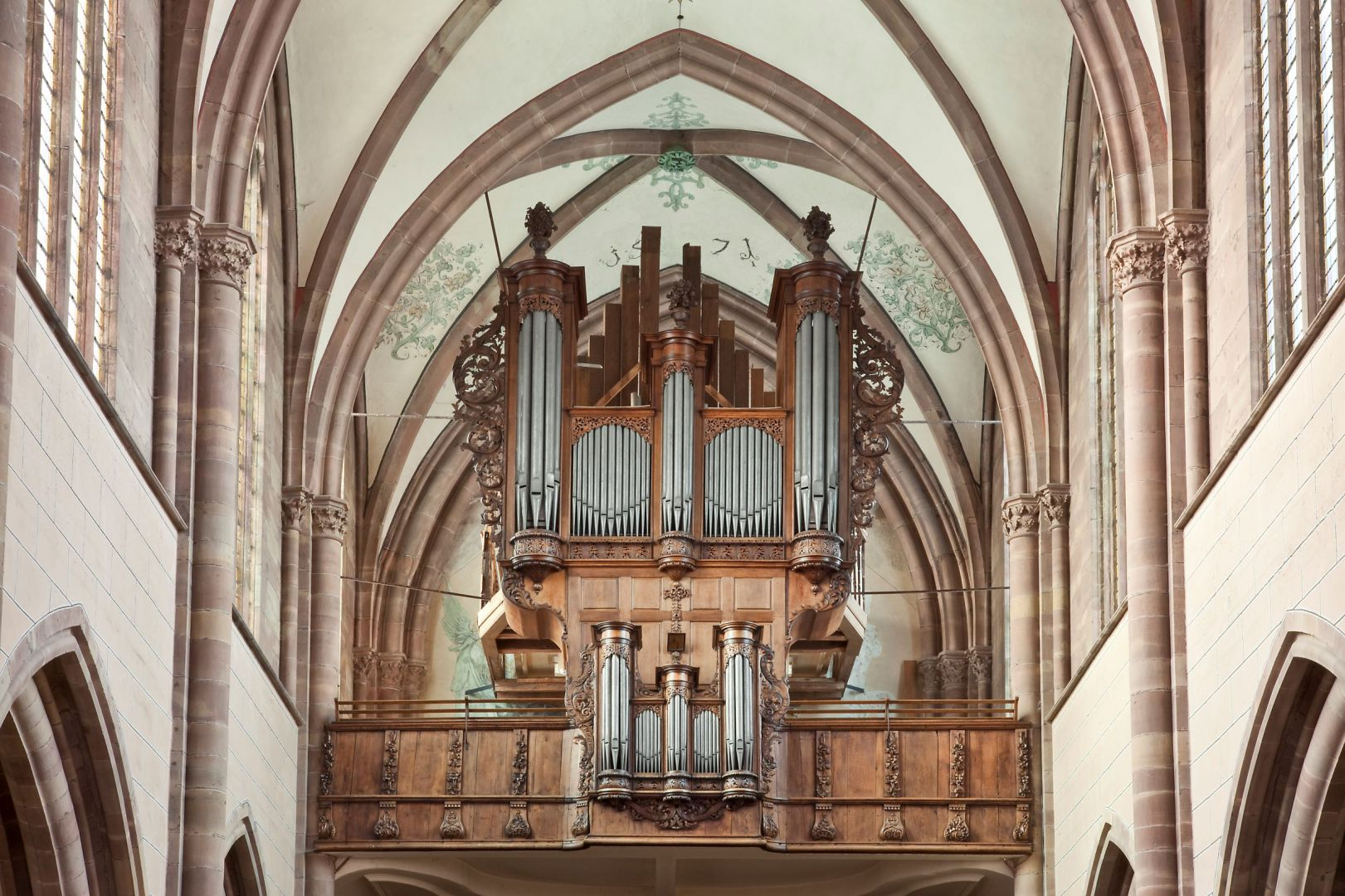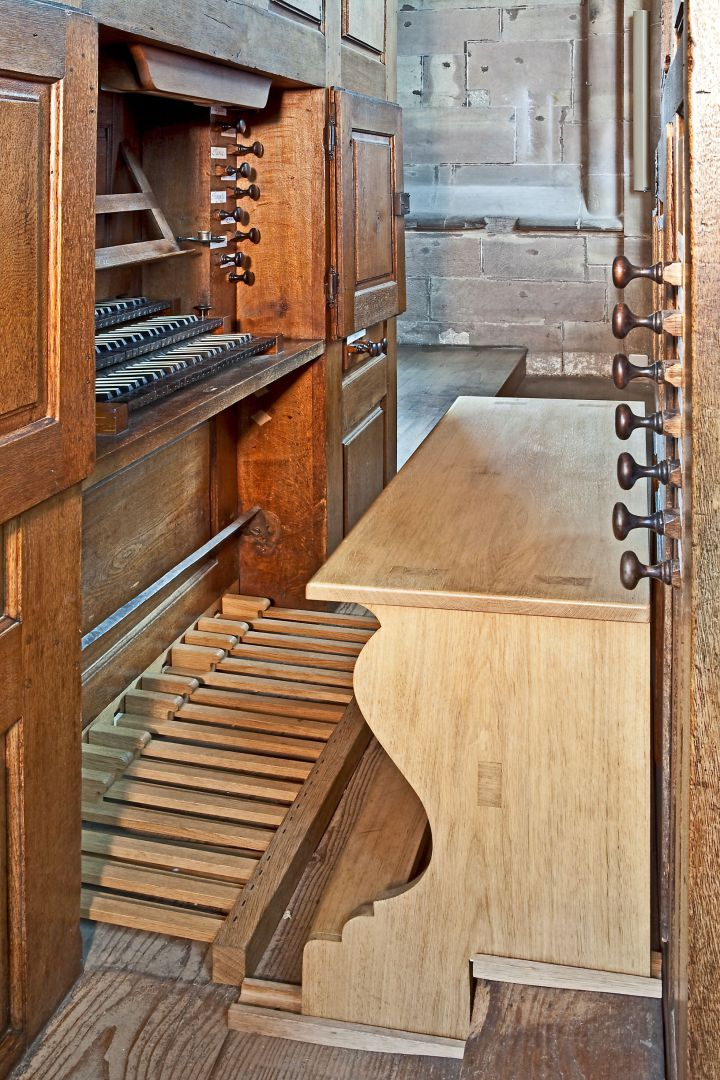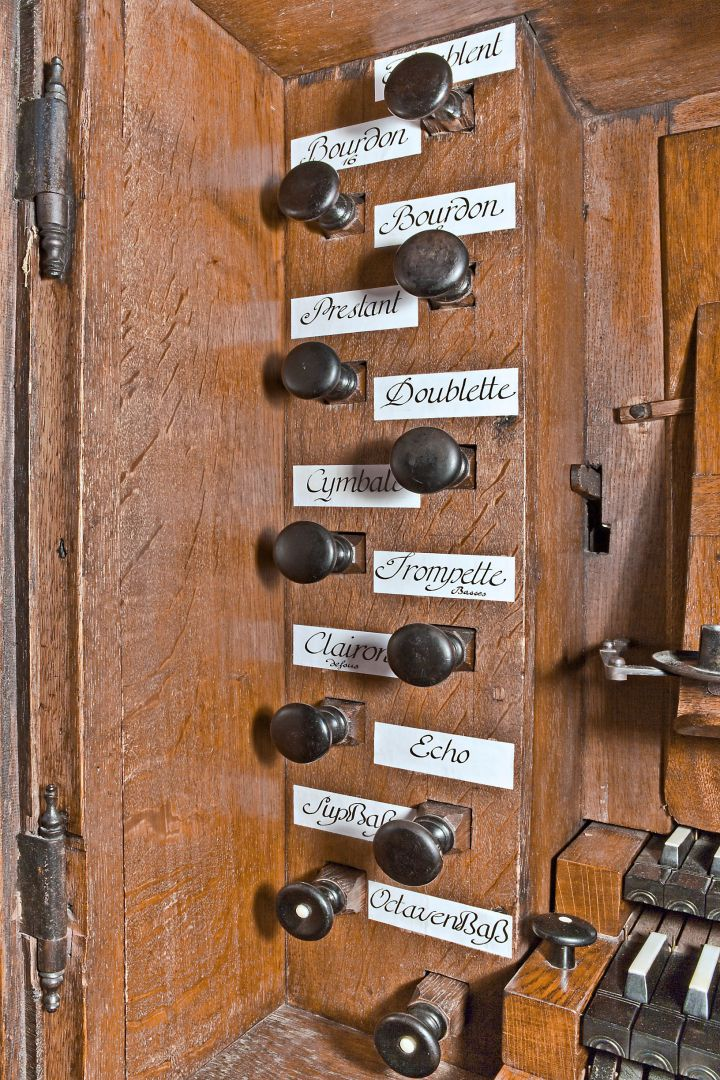Saint-Etienne Abbey - Marmoutier
Overhauling the André Silbermann organ 1709 in the Abbey Church of Saint-Etienne in Marmoutier
The Silbermann organ (1709) in Marmoutier is one of the two or three most prestigious instruments in Alsace.
It is considered to be one of the well-preserved instruments of 17th-century in France, and has an international reputation. All the techniques used are historical, and we have not used any products that did not exist at the time.
Three cuneiform bellows made in Stiehr facsimile by Bruno Weigel were installed in 2009. The organ case and gallery were re-varnished according to research carried out at the Musée de la Musique de la Philharmonie de Paris.
28 jeux, III claviers, pédale
| Positif de dos, 49 n. (C-c''') | Grand Orgue, 49 n. (C-c''') | Écho, 25 n. (c'-c''') | Pédale, 27 n. (C-d') |
|---|---|---|---|
| Bourdon 8' | Bourdon 16' | Bourdon 8' | Supbas 16' |
| Montre 4'* | Montre 8' | Prestant 4' | Octavenbas 8' |
| Nasard 2' 2/3 | Bourdon 8' | Cornet III rgs | Prestant 4' |
| Doublette 2' | Prestant 4' | Bomparte 16' | |
| Tierce 1' 3/5 | Nasard 2' 2/3 | Trompette 8' | |
| Cymbale III rangs | Doublette 2' | ||
| Cromorne 8' | Tierce 1' 3/5 | ||
| Cornet V rangs | |||
| Fourniture 4 rangs | |||
| Cymbale III rangs | |||
| Trompette 8' (B/D) | |||
| Clairon 4' B/D) | |||
| Voix humaine |
Accouplement I/II, Tremblant Doux, Tremblant Fort


